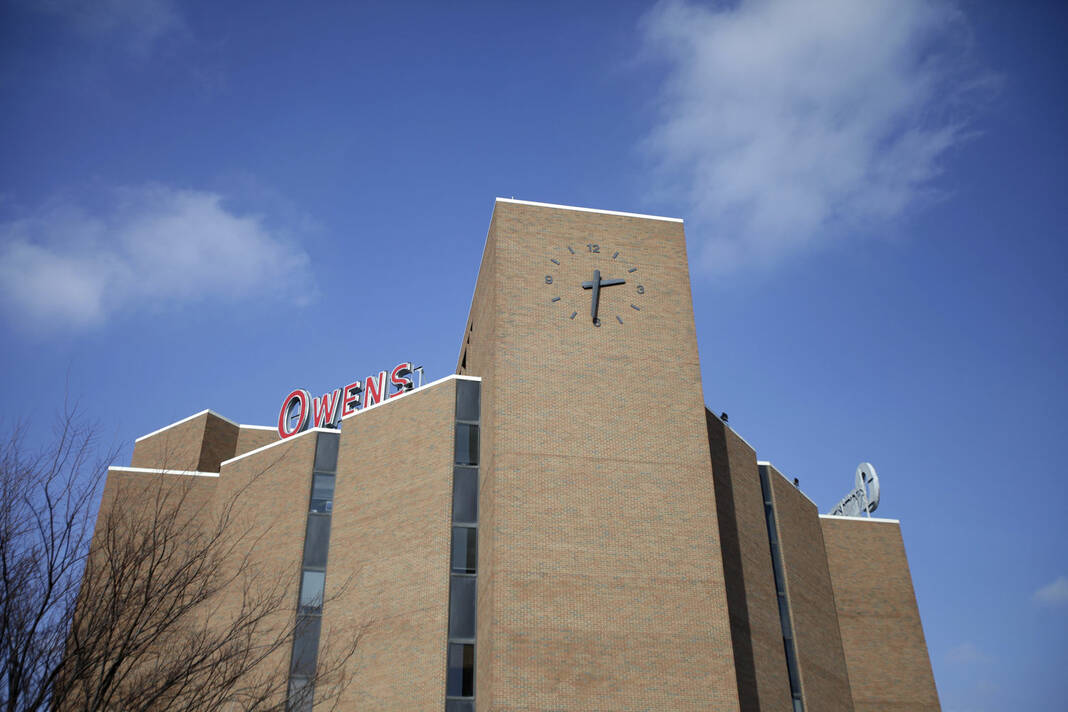
PERRYSBURG — Owens Community College is going ahead with plans to move its school of nursing and health professions.
The college’s board of trustees endorsed the renovation project at its Tuesday meeting and gave approval for legal counsel to develop a financing plan, including bond proceeds and institutional funding.
In 2019, a space plan for the campus was developed to identify areas for enrollment opportunities, reduce the campus’s overall square footage for better sustainability, and better align programs within each school.
At a finance committee meeting held Jan. 31, Jeffrey Ganues, vice president of business affairs and chief financial officer, provided a floor plan of the new space, expected expenditures and proposed new enrollment for the project.
He broke down the cost of the estimated $31.81 million project, which included $1.44 million to The Collaborative, which is the architect for the project; $19.95 million in construction costs; $800,000 for furniture; $1.50 for audio-visual work; and $325,000 for moving costs.
Another $2.10 million will be needed for new and replacement equipment.
The total also contains about $2.78 million for contingencies.
“This could all be used or none of it used,” Ganues said.
“I think this is the highest it could be, at the $32 million. As of right now, I think we are still being overly conservative of the project costs,” he said.
Health Technologies Hall is the building with the highest amount of deferred maintenance on campus. It had been retrofitted to fit the health programs and does not allow any increases in enrollment.
“Our nursing program is out of space to do any type expansion in (Health Technologies),” Ganues said. “There’s no opportunity for those programs to grow.”
Rather than invest in an estimated $18.90 million in deferred maintenance, the proposal was made to move nursing and health technologies across Oregon Road to former site of Audio/Visual Services and the library.
That move allows the college to offer facilities that fit the design needs of the department, allow for growth in enrollment and eliminate the 37,000 square feet that includes Health Technology Hall and the adjacent Bicentennial Hall.
Lab space for nursing will nearly double in the new space, which hopefully will reduce the size of the cohorts and increase retention, Ganues said.
Owens has a dental clinic on site with no space to add another chair, and with the high demand in this career, more space will attract more students, he said.
In the new location, the clinic will have direct access to a parking lot to continue to help serve more than the 1,000 people annually, Ganues said.
He is anticipating 64 new nursing students, 10 new students each in medical assisting and dental assisting, 12 new MRI students and eight, six and five students in health information technology, dental hygiene and surgical tech, respectively.
Trustee Rita Russell asked what would be done with the eliminated space and what was the projected income from the 115 new students.
There will be an evaluation on the space to determine if there is an opportunity for use of Health Technology Hall; however, an estimated $14.9 million in upgrades will be needed for that facility in the next five years, Ganues said.
Any revenue through a lease of the building will not be enough to offset the cost of updating it to meet the needs of a new tenant.
He said he anticipates the high threshold on the college’s return on investment will mean its elimination. He added since Bicentennial Hall is attached, the most cost effective decision is to tear down both buildings.
The new space is about 8,000 square feet smaller but would include a new addition of 21,300 square feet.
Owens President Dione Sommerville pointed out there is a lot of sensitivity around the five-story Health Technology Hall as it is a landmark around campus.
Owens signature “O” sits on top the building.
Projected yearly new net income from the anticipated growth in enrollment is $2.21 million, Ganues said.
Russell asked for a worse-case scenario if the projected 115 growth in enrollment is not realized.
Ganues said he felt the number was conservative and it was less than the 156 originally anticipated.
Trustee Rich Rowe asked if the changes were due to accreditation. Denise Smith, vice president of Academic Affairs, said that was the reason.
“It is set up as a professional building, which is the new view of health care, which will impact all the accreditation of all of those programs because there is an expectation they are learning to work together as they would in a hospital or doctor’s office setting,” Smith said.
Also in the new site, the radiology program, MRI program and sonography are side by side to allow for collaboration, Ganues said. The space also allows for labs that simulate a hospital setting.
Smith said there is currently no room to provide the simulations and the program could be harmed by not having state-of-the-art facilities.
“My fear is, if we don’t have this moving forward, we’re going to see our programs take a hit,” she said. “And we don’t want that, and our community can’t have that since we are the largest educator of health sciences in the area.”
“This is really an opportunity to invest in some of our signature programs … and allows us to make sure our students have some of the best equipment and facilities,” Somerville said.
Ganues will present updated project cost estimates at the April finance committee meeting as well as finalized financing for the project.
Construction is scheduled to begin at the end of June.

